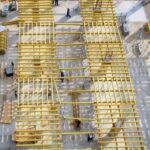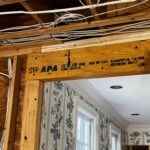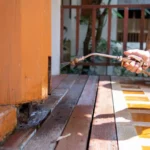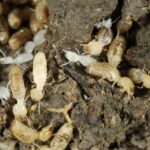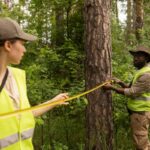Professional arborist care in Wahroonga is crucial for protecting the suburb’s valuable heritage and native trees. These certified experts have the knowledge and skills to evaluate tree health, identify potential hazards, and implement maintenance plans that ensure the long-term survival of the area’s unique eucalypts, sandpaper figs, and lemon-scented tea trees.
Hiring a certified arborist guarantees professional evaluation, compliance with regulations, and customised care for your trees’ well-being. This combination of experienced assessment and adherence to local laws safeguards both your property investment and Wahroonga’s natural environment.
Property owners often have many questions when it comes to managing trees on their property:
- Which trees need council permits before pruning or removing?
- How do rules regarding heritage conservation areas impact decisions about tree maintenance?
- What signs indicate that a tree may be unsafe and requires intervention from a professional?
- When is the best time to prune in order to minimise issues with diseases and pests?
This guide aims to answer these common questions while also discussing how arborist Wahroonga services help protect heritage trees and provide specialised care for native trees. You’ll learn about local regulations in Ku-ring-gai and Hornsby Shire, as well as soil analysis methods for indigenous species, all of which highlight the importance of professional tree management in maintaining Wahroonga’s urban forest ecosystem.
What Role Does a Professional Arborist Play in Protecting Heritage and Native Trees?
A professional arborist is responsible for looking after Wahroonga’s important trees by regularly checking their health and taking preventative measures. These certified experts have the technical knowledge to spot weaknesses, diseases, and environmental stressors that untrained people might overlook.
Why Is Heritage Tree Care Important?
Taking care of heritage trees requires special skills. Arborists inspect mature trees for:
- Dead wood accumulation in the canopy that increases branch drop risk
- Hazardous limbs weakened by decay or pest infestation
- Root plate stability issues threatening the tree’s structural integrity
- Signs of fungal infection or bacterial disease requiring immediate intervention
What Does a Professional Arborist Do?
The job of a professional arborist goes beyond just identifying problems. They create personalised treatment plans that target specific weaknesses while keeping the tree’s natural shape and ecological role intact. For Wahroonga’s native eucalypts and heritage-listed trees, this focused approach stops small problems from turning into irreversible harm.
Why Is Expert Help Necessary?
Expert intervention is crucial for ensuring trees stay healthy in the long run. Arborists know how Australian native species grow and respond to stress, which helps them suggest pruning schedules that match natural growth patterns. Their evaluations consider factors like environmental conditions, soil quality, and nearby structures to develop sustainable management strategies that prolong tree lifespan by many years while also prioritising public safety.
How Do Local Regulations Influence Tree Management in Wahroonga?
Wahroonga tree regulations require property owners to obtain council approval before undertaking significant tree work. Both Ku-ring-gai and Hornsby Shire councils mandate permits for pruning or removing trees that meet specific criteria, such as trunk diameter thresholds or species classifications.
Heritage conservation permits add another layer of protection for properties within designated conservation areas. These regulations recognise that mature trees contribute to the historical character and environmental value of Wahroonga’s established neighbourhoods. Property owners in heritage zones must demonstrate compelling reasons for tree removal, such as documented safety hazards or irreversible disease.
Local council tree laws distinguish between routine maintenance and substantial alterations. Minor pruning for clearance or deadwood removal typically falls outside permit requirements, whilst significant canopy reduction or removal triggers the approval process. The councils maintain registers of significant trees, including native eucalypts like stringybark and ironbark that define the local landscape.
The regulatory framework serves a dual purpose:
- Preventing unnecessary loss of established trees that provide habitat and cooling
- Balancing property owners’ legitimate concerns about safety and infrastructure damage
- Maintaining canopy cover across Wahroonga and neighbouring suburbs
Certified arborists navigate these Wahroonga tree regulations daily, preparing compliant applications that address council criteria whilst advocating for appropriate tree care solutions. Their familiarity with local requirements streamlines the approval process for property owners.
What Are the Key Tree Care Services Provided by Arborists in Wahroonga?
Professional arborists in Wahroonga deliver specialised services designed to maintain tree health whilst addressing safety concerns. These certified experts provide comprehensive solutions tailored to both heritage specimens and native species throughout the region.
Tree Pruning
Tree pruning Wahroonga specialists perform strategic trimming to remove dead wood, improve structure, and enhance light penetration through the canopy. This service prevents branch failure and reduces disease spread, particularly important for mature eucalypts and other native species that dominate local landscapes.
Palm Pruning
Palm pruning services address the unique requirements of palm species, removing dead fronds and seed pods that can become falling hazards. Certified arborists understand proper cutting techniques that prevent damage to the trunk and maintain the palm’s natural defence mechanisms.
Stump Grinding
Stump grinding eliminates tree remnants below ground level, preventing regrowth and removing trip hazards from properties. This service stops root systems from interfering with foundations, pathways, and underground utilities whilst preparing sites for new plantings.
Tree Removal
The tree removal process represents the final option when trees pose immediate danger or suffer irreversible decline. Arborists assess whether removal is genuinely necessary, considering factors like structural failure risk, disease severity, and proximity to structures. When unavoidable, removal follows strict safety protocols to protect property and people, with plans typically including replacement plantings of indigenous species to restore ecological value.
How Do Arborists Ensure the Health and Safety of Heritage and Native Trees?
Tree health monitoring
Tree health monitoring begins with systematic visual inspections where certified arborists examine canopy density, leaf colour, bark condition, and signs of decay. These assessments identify early warning signs such as fungal growth, unusual sap flow, or discoloured foliage that indicate underlying problems requiring intervention.
Structural integrity assessment
Structural integrity assessment involves evaluating the tree’s physical stability through detailed examination of trunk strength, branch attachments, and root systems. Arborists look for:
- Cracks or splits in major limbs that could fail during storms
- Cavities or hollow sections compromising structural support
- Root plate movement suggesting instability
- Co-dominant stems with weak unions prone to splitting
Pest and disease control
Timing plays a critical role in pest and disease control. Arborists schedule pruning work before the spring growth cycle when trees are dormant, minimising stress and reducing entry points for pathogens. This strategic timing prevents infections that thrive in warmer months whilst allowing wounds to compartmentalise effectively.
Root zone assessments
For heritage eucalypts and native species like sandpaper fig, arborists conduct root zone assessments to detect underground issues affecting stability. They identify compromised roots threatening foundations or creating trip hazards, then develop management plans that preserve tree health whilst addressing safety concerns. Regular monitoring schedules ensure ongoing protection, with follow-up inspections tracking recovery from previous interventions and catching new problems before they escalate.
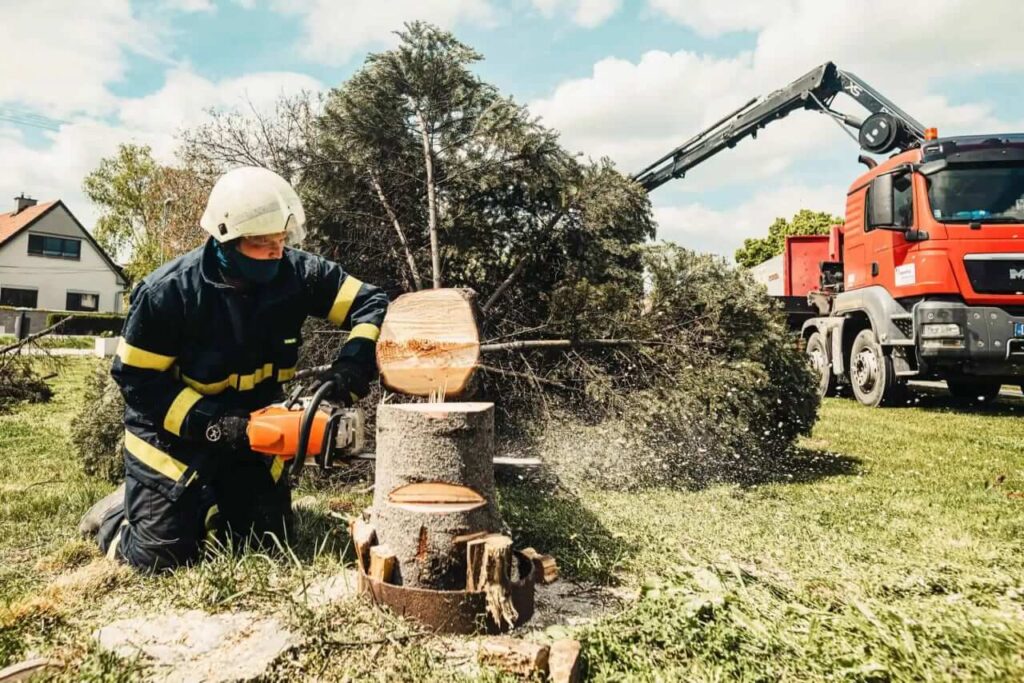
Why Is Soil Analysis Important in Tree Care for Wahroonga’s Native Species?
Soil analysis for trees reveals nutrient deficiencies and pH imbalances that directly impact native species survival. Professional arborists collect soil samples from multiple depths around the root zone to assess mineral content, organic matter levels, and drainage capacity specific to each site.
Understanding Native Species Nutrition Requirements
Native species nutrition requirements differ significantly from exotic ornamentals. Eucalypts, including stringybark and ironbark varieties common to Wahroonga, thrive in low-phosphorus conditions—excessive phosphorus actually damages their root systems and prevents nutrient uptake. Soil testing identifies these critical thresholds before fertilization.
Tailored Fertilization Recommendations
Fertilization recommendations based on laboratory analysis ensure native trees receive appropriate nutrients without harm:
- Eucalypts require minimal nitrogen and trace elements like iron and manganese
- Sandpaper fig benefits from moderate organic matter to support its shallow root system
- Lemon-scented tea tree needs well-drained, slightly acidic soil with controlled nutrient release
Arborists interpret test results to create species-specific feeding schedules that match Wahroonga’s natural soil conditions. Sandy loam soils prevalent in the area often lack sufficient organic content, requiring targeted amendments that mimic bushland environments rather than conventional garden fertilizers.
Addressing Compaction and Contamination Issues
Testing also identifies compaction issues and contamination from construction activities, both of which restrict root growth and water penetration. Addressing these problems through soil remediation protects established heritage trees and gives newly planted natives the foundation they need to establish strong root systems.
When Is Tree Removal Necessary and How Is It Managed Responsibly?
Does a tree always need to be saved? Responsible tree removal becomes necessary when a tree presents imminent safety hazards—such as severe structural instability, extensive decay, or irreversible disease that threatens neighbouring properties or public spaces. Dead or dying trees with compromised root systems can topple unexpectedly during storms, whilst those infected with contagious diseases may endanger surrounding vegetation.
Risk mitigation removal requires meticulous planning by certified arborists who assess:
- Structural integrity: Identifying hollow trunks, major limb failures, or root plate movement
- Disease severity: Determining if treatment is viable or if infection poses wider ecological threats
- Proximity hazards: Evaluating risks to buildings, power lines, and pedestrian areas
- Heritage value: Balancing preservation obligations against genuine safety concerns
Professional arborists coordinate removal operations to prevent injury and property damage, using specialised equipment and techniques suited to Wahroonga’s residential landscape. They obtain necessary council permits and document the justification for removal, particularly for heritage-listed specimens.
Indigenous species replacement forms a critical component of responsible removal. Arborists recommend suitable native alternatives—such as local eucalypt varieties, sandpaper fig, or lemon-scented tea tree—that match the site’s soil conditions and spatial requirements. This approach maintains the suburb’s ecological balance whilst replacing lost canopy cover with species that support local wildlife and complement the area’s natural character.
How Does Professional Arborist Care Support Community Awareness and Urban Forest Sustainability?
Professional arborists play a crucial role in educating the community about tree care and environmental conservation. They bridge the gap between legal requirements and practical tree maintenance, ensuring that property owners understand their responsibilities when it comes to protecting trees.
Educating Property Owners
In Ku-ring-gai and Hornsby Shire, professional arborists inform property owners about important processes such as:
- Council permit applications for tree removal or pruning
- Heritage conservation obligations for protected trees
- Specific protections granted to significant native species
By providing this information, arborists empower property owners to make informed decisions about their trees and comply with local regulations.
Sharing Knowledge with the Community
Arborists also actively engage with the community by sharing their expertise on various aspects of tree care. This includes:
- Teaching residents about the best times to maintain their trees
- Providing guidance on watering schedules that are suitable for local eucalypts
- Identifying early signs of tree stress and how to address them
Through workshops, community events, and one-on-one conversations, arborists inspire residents to take an active role in preserving Wahroonga’s urban forest.
Promoting Sustainable Practices
Certified arborists are advocates for sustainable tree management practices. They offer guidance on:
- Correct mulching techniques for native species
- Selecting indigenous replacements that support local wildlife
- Maintaining established heritage trees without compromising their structural integrity
By promoting these practices, arborists help ensure that Wahroonga’s urban forest remains healthy and resilient.
Documenting Tree Health Trends
Arborists play a vital role in monitoring the health of trees in the suburb. They document trends such as:
- Increased pest infestations or diseases affecting specific species
- Changes in growth patterns or leaf drop due to environmental factors
- Overall decline or improvement in tree health over time
This data is valuable for local councils as it informs conservation policies and strategies. By understanding the challenges faced by different tree species, councils can implement targeted initiatives to protect and restore Wahroonga’s urban canopy.
Strengthening Community Advocacy
The cumulative effect of informed property owners creates a network of tree advocates who understand the ecological value of preserving sandpaper figs, lemon-scented tea trees, and various eucalypt species. These advocates can influence decision-making processes at both the individual and community levels.
When residents are equipped with knowledge about the importance of certain trees or ecosystems, they are more likely to advocate for their protection during development proposals or public consultations. This grassroots advocacy complements the efforts of professional arborists and reinforces the message of sustainability.
Building a Leafy Reputation
The collaborative approach between professionals and residents strengthens Wahroonga’s reputation as a leafy suburb where heritage and native trees receive specialised attention.
As more people become aware of the significance of these trees, there is potential for increased appreciation among visitors and prospective residents alike. This can have positive implications for tourism, property values, and overall community pride.
By working together towards common goals—such as preserving existing green spaces or planting new ones—both professional arborists and local residents contribute to creating an environment that supports biodiversity while enhancing quality of life. Click here to get more about tree removal in Epping what permits do you need before cutting?
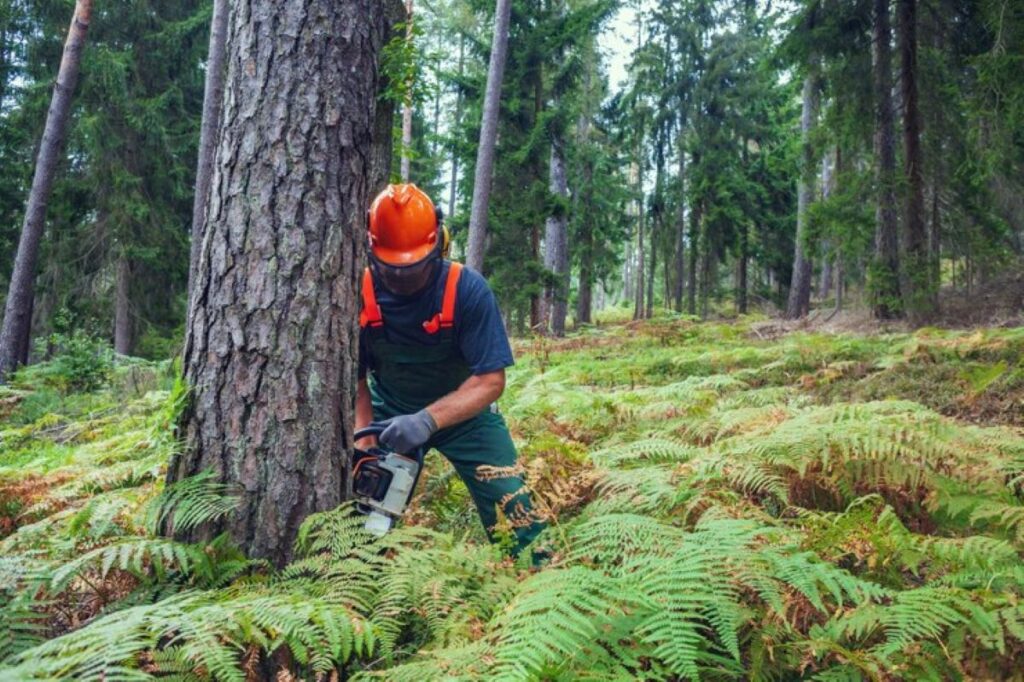
Conclusion
Wahroonga’s heritage and native trees are invaluable natural resources that require professional expertise to thrive for generations. The intricacies of tree management—such as understanding council regulations and identifying structural risks—demand the specialised knowledge that only certified arborists possess.
Don’t leave your property’s valuable trees to chance. When you hire professional arborist Wahroonga services, you gain access to:
- Comprehensive health assessments that protect heritage trees from preventable decline
- Expert native tree care tailored to eucalypts, sandpaper figs, and other indigenous species
- Legal compliance support for permits and heritage conservation requirements
- Proactive maintenance that prevents costly emergency removals
The importance of professional care in safeguarding heritage and native trees becomes evident through thorough evaluations, strategic pruning, and informed decision-making. Your trees deserve attention from qualified experts who appreciate both their ecological value and structural requirements.
Get in touch with a certified arborist today to arrange a property evaluation and create a personalised care strategy that preserves your trees while promoting the long-term health and beauty of your landscape.
FAQs About Professional Arborist Services in Wahroonga
Certified arborists protect heritage and native trees by assessing health, preventing hazards, and ensuring long-term survival.
2. Which trees require council permits for pruning or removal?
Heritage-listed trees, significant native species, and trees meeting specific size thresholds in Ku-ring-gai and Hornsby Shires usually need council approval.
3. What services do arborists provide for tree care?
Services include tree and palm pruning, stump grinding, tree removal, structural assessments, soil analysis, and pest/disease management.
4. How do arborists ensure the health of heritage and native trees?
Through regular inspections, structural integrity assessments, root zone evaluations, and monitoring for pests and diseases.
5. Why is soil analysis important for native species?
It identifies nutrient deficiencies, pH imbalances, and compaction issues, allowing arborists to provide tailored fertilization and soil care.
6. When is tree removal necessary and how is it handled?
Removal is considered for safety hazards, severe disease, or irreversible decline. Arborists plan removal responsibly, obtain permits, and recommend indigenous replacements.
7. How do arborists support legal compliance for tree management?
They navigate council regulations, prepare permit applications, and ensure work meets heritage conservation and local tree laws.
8. How do arborists contribute to community awareness and sustainability?
They educate residents, promote proper tree care, share knowledge on indigenous species, and document tree health trends for councils.
9. What are the benefits of hiring a certified arborist for property owners?
Property owners gain expert evaluations, native tree care, legal compliance support, proactive maintenance, and protection of heritage trees.

